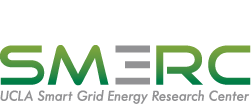
|
|||
Back To Projects
|
|||
©2010-2015, info@smartgrid.ucla.edu
44-120 Engr. IV, 420 Westwood Plaza, Los Angeles, CA. 90095 |
|||

|
|||
Back To Projects
|
|||
©2010-2015, info@smartgrid.ucla.edu
44-120 Engr. IV, 420 Westwood Plaza, Los Angeles, CA. 90095 |
|||